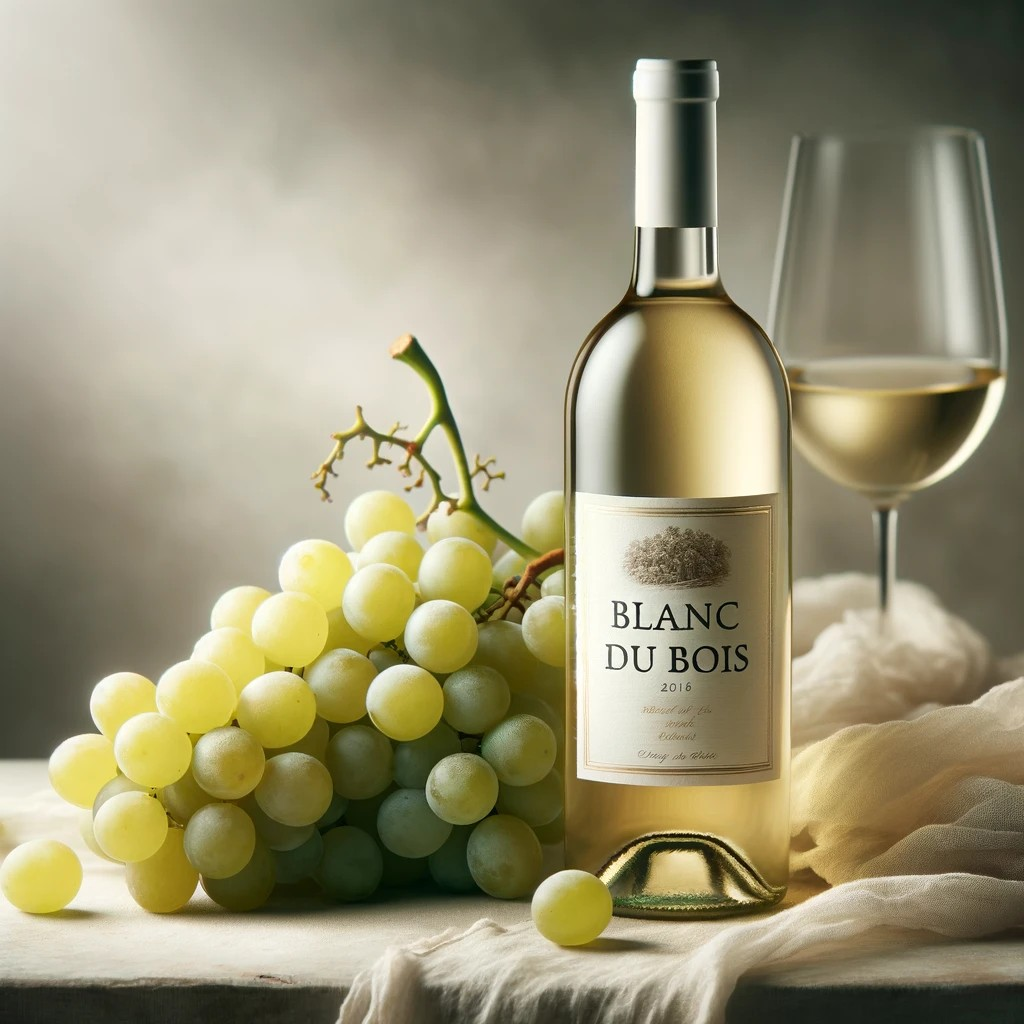Introduction to Blanc Du Bois
Blanc Du Bois, named in honor of Emile DuBois, a pioneering Florida horticulturist, is a versatile white grape variety that thrives particularly well in the southern United States, especially in regions prone to Pierce’s Disease. Developed by John Mortensen at the University of Florida in 1968, this hybrid grape was specifically bred to resist this disease, which plagues many vineyards across the U.S.
Blanc Du Bois wines are celebrated for their ability to express a clear sense of terroir and for their adaptability in various winemaking styles. The grape typically produces wines with a robust profile, offering a range of aromas from tropical fruits to floral notes, depending on the vinification process. It is often enjoyed in styles that highlight its natural acidity and aromatic potency, such as dry, sweet, or even sparkling wines.
Widely appreciated for its resilience and the quality of wine it produces, Blanc Du Bois has gained a significant following among vineyards in warmer climates, where traditional Vitis vinifera grapes struggle. Its cultivation extends beyond Florida to states like Texas, Louisiana, and even up to regions in Georgia, showcasing its versatility and increasing popularity among both winemakers and wine enthusiasts.
Growing Conditions and Techniques
Blanc Du Bois grapes flourish in the humid, hot climate of Texas, which mirrors the conditions of their Floridian origins. The key to successful cultivation includes strategic vineyard placement to maximize sun exposure while minimizing the risk of prolonged moisture on the vines, which can lead to fungal diseases. Vineyards often employ elevated trellising systems to improve air flow around the vines, an essential step in disease prevention.
Winemaking and Tasting Notes
Blanc Du Bois wines are versatile and can be crafted into a variety of styles, depending on the winemaker’s goals. Dry versions are crisp, with vibrant acidity and aromas of citrus, pear, and floral notes, while sweeter styles offer richer expressions of tropical fruits and honeysuckle. The grape’s natural acidity makes it a fantastic candidate for sparkling wines, which are gaining popularity in Texas.
Contributions to the Texan Wine Scene
The introduction of Blanc Du Bois to Texas has broadened the spectrum of local wine offerings, attracting wine enthusiasts interested in exploring new and diverse wine profiles. Its adaptability to the climate and resistance to common diseases allows it to thrive where other white grape varieties might struggle, positioning it as a cornerstone of sustainable viticulture in Texas.
Who is Producing Blanc Du Bois Wines?
If you would like to give a Blanc Du Bois wine a taste, here are a few locations where you might pick one up.
Rowdy Creek Ranch in Gilmer, Texas. 2021 Blanc du Bois- Dry, Blanc du Bois- Sweet
Haak Wines in Santa Fe, Texas. Blanc Du Bois Madeira, 2023 Blanc du Bois Semi-Dry, 2023 Dry Blanc du Bois,
Cannon Creek Vineyard in Canton, Texas. 2019 Blanc du Bois (Off-Dry), 2018 Blanc du Bois (Sweet)
Conclusion
The cultivation of Blanc Du Bois grapes in Texas is more than just an agricultural endeavor; it is a reflection of Texan innovation and adaptability in the face of climatic and ecological challenges. These grapes not only enrich the Texan wine portfolio but also demonstrate the potential for sustainable viticulture in regions beset by environmental challenges. As the Texas wine industry continues to evolve, the role of these resilient grapes will undoubtedly be central to its success, promising exciting times ahead for growers, winemakers, and wine lovers alike.

